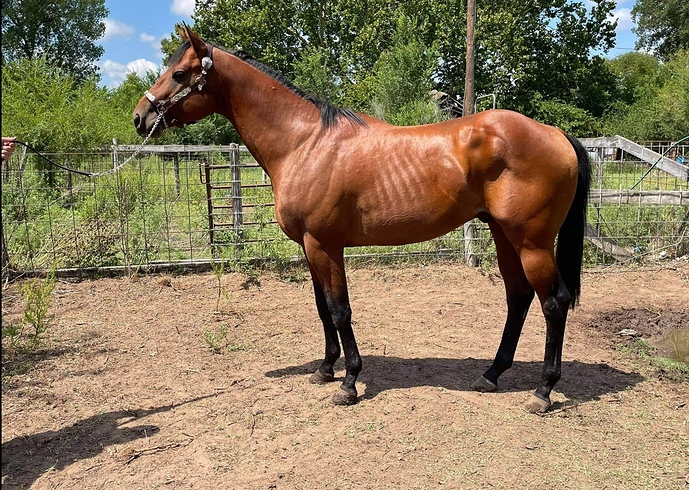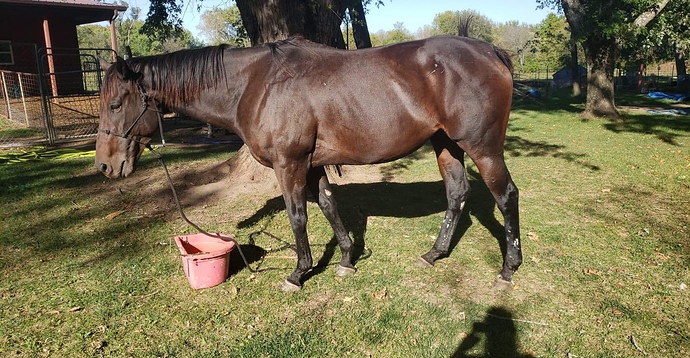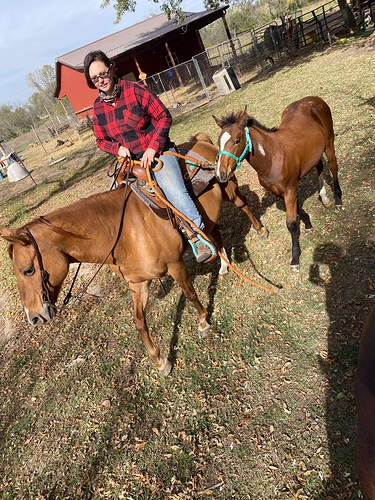I’m going to preface this by saying this wasn’t planned and came from an unfortunate situation where I had no choice but to keep my horses out with a “friend” that I no longer engage with in any way. She had a cryptorchid stud that she has been “going to geld” for years now, but she “hasn’t had the money” even though in the last 12 months she has bought a newer truck, trailer (she stated she paid cash, and it cost more than the surgery to geld), and house. He has had 2 foals (1 live with a pony mare, 1 stillborn with his half-sister, also Stud owner’s horse) and was getting out of his separate pen from Jan 31st to March 12th and my OTTB for sure let him mount and “breed” Jan 31st. I have a friend that knows more about equine reproduction than I do that claimed that it was highly improbable if not impossible for them to get bred in that time frame (I live in Kansas in the United States). With the time period of when the stud left and the signs that are showing we are guesstimating them to be about 7.5-8 months pregnant but will try to have a vet confirm.
He has for sure bred my OTTB Mare (Shaker), as she had started dropping weight and gained some back, although not as quickly as she normally does, she is usually a fairly easy keeper. You can now feel foal kicks, so I am positive that she is bred, just need the vet to confirm and get a better time estimate if possible.
My 19yr old AQHA mare, that I 160% didn’t want bred has potentially (most likely) also been bred. She is usually quite fit, and a tad chubby. I had started feeding her Buckeye’s Grow’N’Win at the same time I started feeding it my yearling gelding and my OTTB more grain, just so she wouldn’t feel left out. She does seem a little leaner than normal, with a rounder belly but seemed to continue to be in season after she was moved, although less so than normal. I am planning to have her checked as well, just to be safe.
With this I have a few questions, one would be the best way to have Shaker continue to gain weight throughout the rest of the pregnancy? She is currently getting 2 meals per day, each consisting of 1lb of Grow’N’Win, 1lb alfalfa pellets and 1.5lbs (soon to be 2lbs) of Nutrena ProForce Fuel, and a top dressing of 2oz canola oil. She is in a pasture with free-choice, good quality Brome hay. The next question is if I should blanket heavier or lighter than normal? Third, are there any special concerns I should have for Charity with her age if she is bred? And lastly, any tips for foaling/babies as this will be my first personal experience with this aside from foal watches for a couple of friends (never had one show signs while I was on watch duty). Thank you for your time, and I hope to learn more through this experience, although unplanned, still an opportunity to learn.




